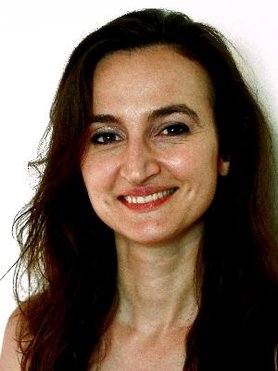Session Abstracts:

Assistant Professor
UC Berkeley
Dynamic risk modeling of civil infrastructure systems susceptible to multihazard impact
Co-Authors: Yiming Jia (UC Berkeley)
Abstract: This study presents a probabilistic framework for multihazard risk analysis and design of civil infrastructure. Specifically, the proposed framework integrates a higher-order network analysis tool, for simulating multihazard scenarios over a defined space-time interval, with a multihazard impact modeling tool to characterize the dynamic risk of individual and interdependent civil infrastructure systems. The higher-order network analysis tool adopts temporal hypergraphs to characterize natural hazard interrelationships (i.e., compound, altering, and triggering) using a series of occurrence models to generate the arrival times and features (e.g., severity) of all considered hazards over a defined space-time interval. The multihazard impact modeling tool adopts Markov models for sequential damage assessment and recovery analysis of infrastructure systems. The framework’s applicability is demonstrated using an illustrative example of a region susceptible to earthquake-induced ground shaking, liquefaction, landslides, and coastal wind and flooding. The proposed framework can help decision-makers design and test efficient disaster mitigation and management policies.
Graduate Student Researcher
UC Berkeley
High-resolution risk assessment of railway networks: A case study of the Bay Area Rapid Transit system
Co-Authors: Matthew DeJong (UC Berkeley)
Abstract: Regional simulation of distributed infrastructure systems is a major challenge in the evaluation of the impact of natural hazards on the built environment, but it is essential for the application of the Performance-Based Earthquake Engineering (PBEE) framework to complex interdependent systems. The evaluation of the post-earthquake performance of transportation networks is especially relevant since these facilitate the reconstruction and recovery process.
In this work, the seismic risk of the Bay Area Rapid Transit (BART) network is considered, as an example of a new methodology for the evaluation of the seismic risk of a large transportation system. A high-resolution simulation framework, based on probabilistic earthquake modeling, a nonlinear concrete bridge model, and Gaussian-Process-enabled surrogate model generation, is developed. Damage to the network is evaluated considering both structural damage and train derailments, using new fragility curves accounting for train-structure interaction.
SimCenter’s R2D tool is used to generate several earthquake scenarios for the risk estimation, and for the aggregation of the damage. Disaggregation results from a HAZUS-like analysis are used to select a few scenarios for the risk computation in a hazard-consistent manner.
The results of the fragility-curve-based analysis are compared to the detailed results obtained by the proposed model. The results of the proposed framework are consistent with those of the more established HAZUS-like analysis while providing at the same time a more detailed description of the damage. Disaggregation results show that most of the expected delays come from structural damage to elevated structures at a few key locations in the network.

Graduate Student Researcher
University of British Columbia
Assessing Post-Earthquake Emergency Healthcare Accessibility Considering Damage to Hospital Buildings and Transportation Infrastructure
Co-Authors: Carlos Molina Hutt (University of British Columbia) and Amy Kim (University of British Columbia)
Abstract: This paper presents a framework for performing a regional assessment of the accessibility of emergency healthcare facilities after a major regional earthquake. Accessibility is assessed using an enhanced two-step floating catchment area analysis of a regional road network, as implemented in ArcGIS. Damage state estimates for hospital buildings with emergency departments are used to assess a reduction in hospital capacity and damage state estimates for bridges on the road network are used to model inaccessible nodes and links. Use of the framework is demonstrated through an illustrative case study example of the Metro Vancouver, BC region under M9 Cascadia Subduction Zone earthquake scenarios. A comparison of accessibility is performed for four scenarios: (1) baseline analysis before an earthquake, (2) analysis considering hospital damage, (2) analysis considering bridge damage and (4) analysis considering both hospital and bridge damage after an earthquake. The outputs of the framework aim to demonstrate the importance of examining interdependent systems when performing regional seismic risk assessment.

Graduate Student Researcher
University of Southern California
Validating Wharf Damage at Port of Oakland from the 1989 Loma Prieta Earthquake: A Study of Liquefaction Effects Using Earthquake Simulations and Uncertainty Quantification
Co-Authors: Chukwuebuka Nweke (University of Southern California)
Abstract: Liquefaction-induced lateral spreading during earthquakes poses a significant threat to coastal infrastructure, as dramatically demonstrated by the extensive damage to the Port of Oakland wharf during the 1989 Mw 6.9 Loma Prieta earthquake. Despite its critical importance, accurately predicting and validating such damage remains challenging due to the complex interactions between soil liquefaction, ground motion characteristics, and structural response. This study aims to address this gap by developing a comprehensive model to validate the observed wharf damage, while simultaneously advancing the use of physics-based earthquake simulations for forward modeling and preemptive engineering design.
Our approach integrates three key components: (1) detailed soil-structure interaction (SSI) modeling using OpenSees, incorporating site-specific soil and structural data; (2) generation of synthetic ground motions using the Graves-Pitarka broadband method, validated against recorded motions; and (3) uncertainty quantification with SimCenter's quoFEM tool to account for variabilities in soil properties, structural materials, and modeling assumptions. By applying this framework to the Port of Oakland case study, we aim to not only replicate the observed damage but also identify the most influential parameters governing liquefaction-induced lateral spreading and structural response.
This research promises multiple benefits: validation of physics-based earthquake simulations for complex soil-structure systems, improved understanding of liquefaction effects on coastal structures, and the development of a robust methodology for predicting potential damage in future events. Ultimately, this work will contribute to more resilient infrastructure design in seismically active coastal regions, potentially mitigating economic losses and enhancing public safety.

Associate Professor
University at Buffalo
Shakemaps for the 2015 Gorkha Earthquake in Nepal using Finite Element Analyses of Surveyed Buildings
Co-Authors: Raymond Hilly, Supratik Bose, and Yingjie Hu
Abstract: The lack of instrumental data following the 2015 Gorkha earthquake in Nepal caused researchers to rely on media accounts, in-situ observations, and online surveys to estimate the earthquake intensity. In an attempt to remove the subjectivity of these methods, this study uses damage assessments performed by Nepal engineers, combined with state-of-the-art finite element analyses to estimate the ground shaking intensity through ShakeMaps in Kathmandu and 11 other municipalities in Nepal. ShakeMaps are used to assess the intensity of ground shaking and the demand imposed on structures after a seismic event. ShakeMaps are obtained using post-earthquake assessment surveys to determine three prototype structures that represent the majority of reinforced concrete (RC) frame buildings with masonry infill walls in Nepal. The damage grade assigned to these buildings in the reconnaissance reports is correlated to the peak first-story drift, to quantify the observed damage. A recently proposed modeling scheme is employed, adopting the strut modeling approach to assemble nonlinear models for each prototype. Fragility curves are developed for the prototype structures using ground motions from the 2015 Gorkha earthquake, as well as far-field ground motions from FEMA P695. The maximum first-story drift is then used to estimate the peak ground acceleration (PGA) and the spectral acceleration from the IDA curves. This allows the transformation of the surveyed buildings into 34,000 locations of known PGA and spectral accelerations. The estimated intensity points are established into spatial bins and then are used to develop ShakeMaps for each municipality, using the empirical Bayesian kriging interpolation method.

Associate Professor
Delft University of Technology
Assessing building damage after the 2021 Nippes earthquake and the 2023 Kahramanmaraş earthquake sequence: a Machine Learning approach using post-event Very High Resolution SAR data
Co-Authors: Valentina Macchiarulo (Delft University of Technology), Pietro Milillo (University of Houston), Yasemin Aktas (University College London), and Michael Whitworth (AECOM)
Abstract: Timely assessment of building damage following earthquakes is crucial for coordinating relief operations, resource allocation, and reducing further risks to human lives and infrastructure. Traditional damage assessment methods relying on field surveys are slow, resource-intensive, and logistically challenging, often resulting in limited availability of timely information for decision-making. Remote sensing techniques using satellite Synthetic Aperture Radar (SAR) have emerged as valuable tools for post-earthquake damage assessment, due to their all-weather and day-night imaging capabilities. Furthermore, the combination of short wavelengths and the Spotlight acquisition mode further enhances SAR capabilities, allowing for Very High Resolution (VHR) data that can capture damage details for individual buildings. Whilst most SAR-based studies for damage assessment rely on change detection methods involving pre- and post-event SAR images, limited availability of pre-event VHR SAR data can hamper the use of these methods in operational scenarios. In this study, we introduce a method employing solely post-event VHR SAR amplitude data and derived textural features for building-level classification of earthquake-induced damage. The proposed method was applied to Earthquake Engineering Field Investigation Team (EEFIT) reconnaissance missions after the 2021 Nippes earthquake in Haiti and the 2023 Kahramanmaraş earthquake sequence in Turkey, demonstrating its potential for rapid post-earthquake damage assessment. The results hold promise for improving response strategies in future post-earthquake scenarios.